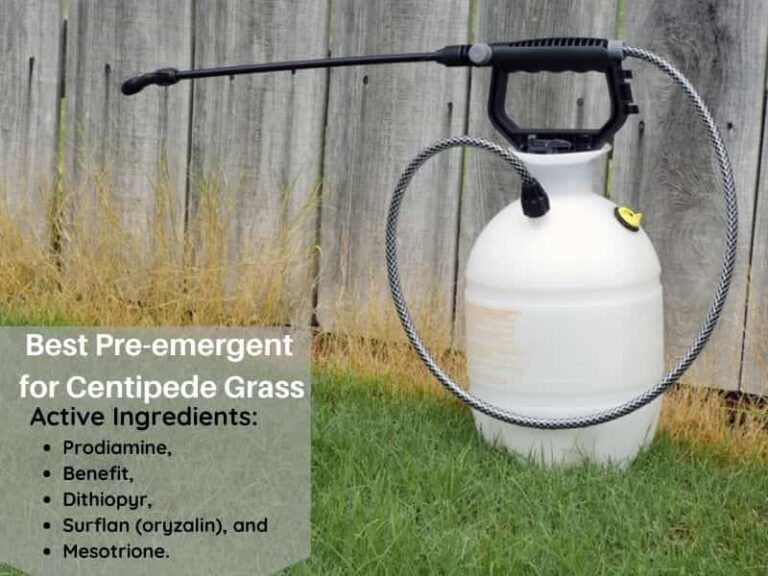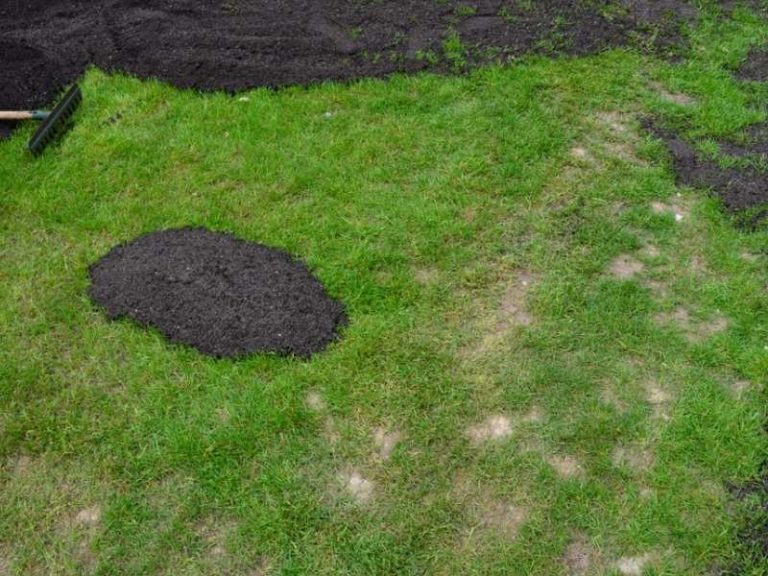Mulching vs. Bagging Grass: Which Is Better?
Mowing is one of the best ways to keep your lawn lush and healthy. Most yard keepers become stranded on where to take the grass clippings after mowing. Deciding whether to mulch or bag grass clippings can be tricky, and sometimes doing one instead of the other can damage your lawn.
The primary difference between mulching and bagging is where the grass clippings go after mowing. When you mulch, you leave clippings on the lawn. Bagging grass clippings remove them from the site. Mulching is better if you mow regularly, while bagging is the best choice if you have long grass that could pose a risk.
Mulching vs. bagging grass – key differences
Mulching involves leaving grass clippings on the lawn during or after mowing.
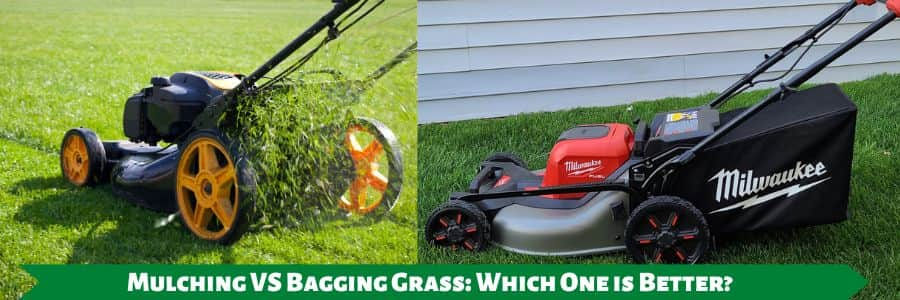
You can use a mulching mower or attach a mower blade to your mower to mulch grass clippings. The mower blade cuts the clippings into smaller pieces in the compartment, releasing them back to the lawn through the back or sides of the mower.
Mulching is ideal for often mowed lawns, and the grass clippings should be shorter than one inch. The mulch is spread evenly throughout the lawn to benefit the grass.
Bagging doesn’t leave grass clippings on the lawn after mowing. Instead, you rake the clippings and transfer them to a plastic bag for disposal or to the compost pit. Bagging clippings leave the lawn sleek, with only the look of freshly manicured grass.
Some mowers have a bag attached to the mower, which collects the clippings as you mow to save time and energy.
Pros and cons of mulching grass clippings
Mulching grass clippings has nutritional, economic, and environmental benefits. Let’s break down the advantages of mulching grass clippings.
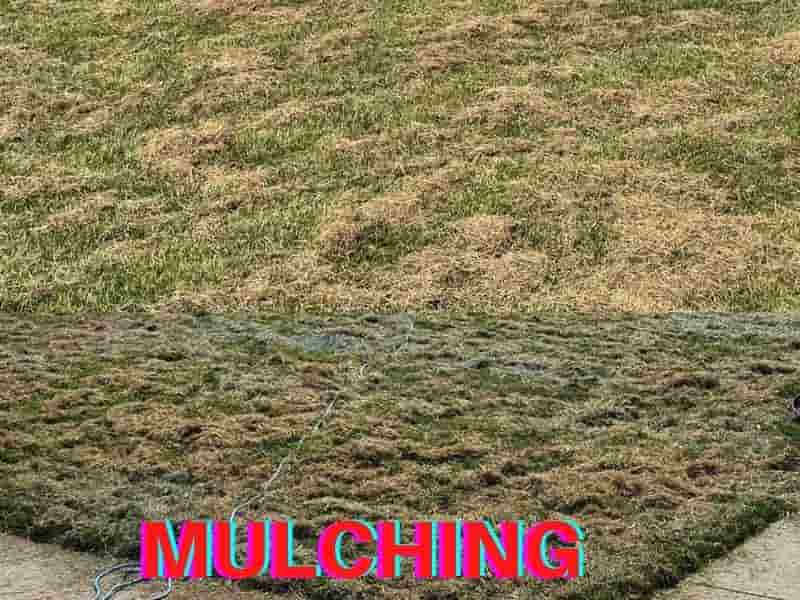
Pro: Mulching provides natural fertilizer to the lawn
Grass clippings are a reliable source of nutrients for the grass. Mulch contains phosphorus, potassium, and nitrogen.
When you leave grass clippings on the lawn, they decompose faster and release nutrients into the soil. The grassroots absorb these nutrients and utilize them for healthy growth.
Grass clippings are shorter than 1 inch. Mulch decomposes faster than it builds. Unlike thatch, grass clippings don’t impede the passage of essential nutrients.
Pro: Mulching grass clippings saves time
Leaving grass clippings on the lawn saves the time you take mowing.
Most lawn mowers have a mulching and discharge compartment, allowing you to mow as you go and spend less time.
Furthermore, you don’t spend much time raking, bagging, and transporting the grass clippings when you mulch.
Pro: Mulching hydrates the lawn
Mulch contains 80-85 percent water. Leaving grass clippings ensures that the water goes back to the soil. The released water supplements watering, especially in summer.
Mulch slows the soil evaporation rate and keeps the lawn moist.
Pro: Mulching saves money
Mulching saves money on tools and services you’d otherwise pay if you bagged the clippings.
If you have large disposal, you don’t need to pay an extra fee to rake and dispose of grass clippings to a lawn service company. You also save the gas money you’d pay to transport the clippings to the damp site.
Mulching also saves money by cutting costs on fertilizers to feed your lawn. Recurrent mulching enriches your soil by adding more nitrogen over time.
Pro: Mulching controls weeds
Mulching is a cultural method to reduce the spread of weeds on the lawn. However, the grass clippings used as mulch should be weed-free.
As some weed seeds require sunlight to grow, a layer of mulch blocks light from reaching weed seeds to germinate.
Mulching requires frequent mowing, so the grass doesn’t grow too long. Often mowing contributes to a healthy environment for grass to grow but makes it unsuitable for weeds.
Mulch also controls the spread of weeds by choking any weeds growing on the lawn.
While mulching has great benefits, it can sometimes be bad for your lawn.
Here are its disadvantages.
Con: Mulch can spread diseases and fungi
Mulching encourages the spread of diseases if the grass or the grass clippings are infected.
An unhealthy lawn shows signs and symptoms such as brown patches, discoloration on some sections, thin grass blades, and stunted growth.
Leaving grass clippings on the lawn can spread disease from one section to the entire lawn.
Since mulch contains water, it might encourage fungi growth. Fungi thrive in dark, damp places. Fungal infections can develop when your lawn is wet, primarily due to clippings.
Con: Incorrect mulching decreases curb appeal
Mulch can look messy and decrease your curb appeal, especially if mowing longer grass that hasn’t been cut for long.
The long grass clippings form unsightly clumps. Additionally, mulch can smell bad if it gets wet and doesn’t decompose fast enough.
Mulching messes with nearby sidewalks or driveways if the clippings accidentally end up in undesignated spots through factors such as strong winds.
Worse, if the clippings weren’t cut right, they might turn brown too soon on the lawn, destroying the yard’s clean appeal.
Pros and cons of bagging clippings
Like mulching, bagging grass clippings can be good or bad for your lawn.
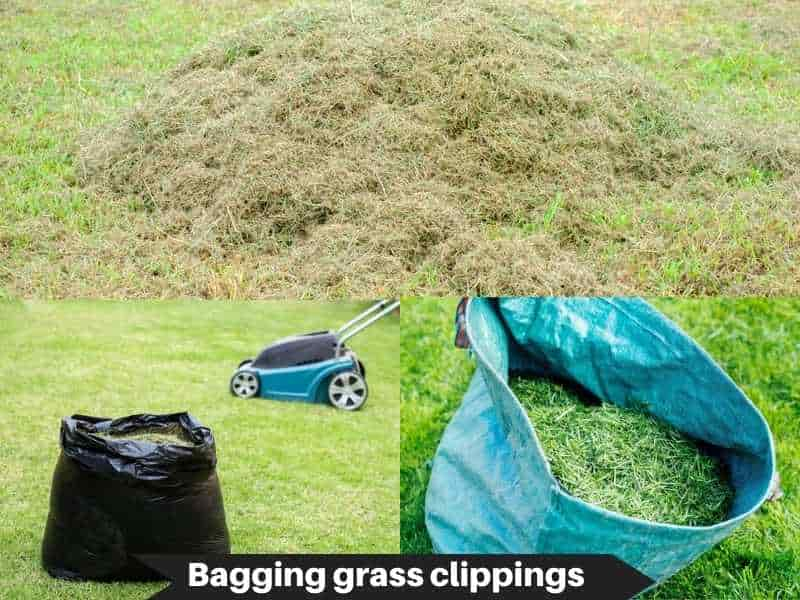
Here are the good sides of removing clippings from the yard after mowing.
Pro: Bagging increases curb appeal
Bagging grass clippings create a clean, beautiful appearance on the lawn, increasing your curb appeal.
Bagging does not leave clumps, creating a sleek, clean-cut appearance.
Pro: Bagging adds nutrients to compost
Bagging grass clippings provide nutrients if you add them to a compost pit. The grass clippings contain nutrients such as nitrogen, phosphorus, and potassium. They are readily released into the compost when they decompose. Topdressing a lawn with compost boosts the soil’s water retention capacity and makes grass grow thicker and richer in color.
Pro: Bagging reduces the spread of pests and diseases
Bagging grass clippings control the spread of pests and diseases from an infected lawn.
Instead of distributing infected grass blades over the lawn, bagging ensures they are disposed of without spreading to healthy lawn areas.
Bagging also reduces the spread of pests by not creating clippings layers where pests can hide.
Pro: Bagging prevents the growth of fungi
Wet grass clippings are a potential breeding ground for fungus. Bagging grass clippings ensure the lawn remains dry, discouraging fungi from growing on it.
Pro: Reduce the chances of throwing debris around
Bagging grass clipping also reduces the chances of throwing a rock or other object, which can cause damage or even injure children and pets.
Pro: Reduces allergens
Grass pollens can cause an allergic attack in allergy sufferers. Bagging reduces the chances of allergy irritation since the pollen is bagged together with grass clippings.
Here are the cons of bagging:
Con: Bagging can be tedious and time-consuming
Bagging requires more time and effort than mulching. With bagging, you must remove clippings when the mower compartment is full. You’ll then have to rake and transfer the clippings to a plastic bag for disposal.
You’ll also transport the clippings bags to compost or a legal dump site. All these tasks take time and effort.
Con: The hassle of finding where to damp the clippings
Finding a suitable place to dump grass clippings is challenging if you have no compost pit. You will need to take them to a public dump site or reach out to close people who may need the clippings.
Also, you might need documentation and official permission to dispose of your bagged clippings.
When to mulch?
If you mow your lawn regularly and maintain the grass length shorter, it’s a good idea to mulch when mowing. Regularly cut grass benefits from the mulch when the clippings decompose and add nutrients to the soil.
It’s also better to leave grass clippings on the lawn when mowing dry grass than when it’s wet. Dry grass is easy to cut and likely won’t harm your property.
When to bag grass clippings?
Mulching has its upsides, but it’s not always the best option for your lawn.
Bagging the clippings is a better option when cutting grass that hasn’t been mowed for a while and the grass has grown too long. In that case, leaving the long grass clippings would make the lawn look messy and might block nutrients and air from reaching the grass.
Bag grass clippings when mowing weed-infested or diseased grass infected or infested with fungi, mold, or pests. Bagging the clippings prevents the spread of diseases or pests on the lawn.
References
- Clemson Cooperative Extension: Mulch.
- University of Minnesota Extension: What to do with grass clippings.
University of Missouri Extension: “Don’t Bag It” Lawn Care.

